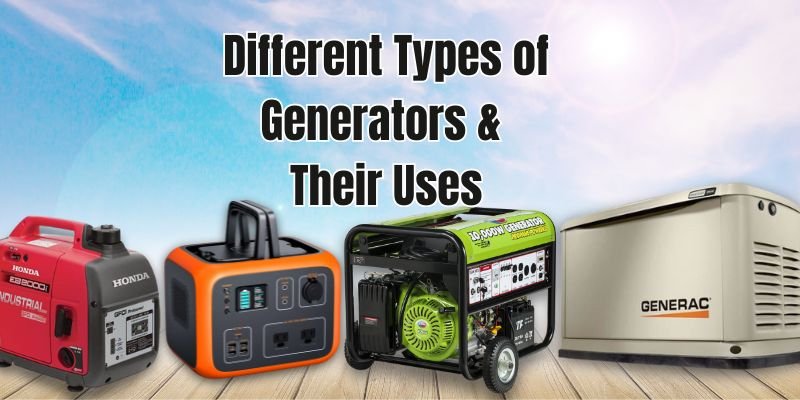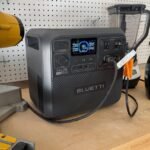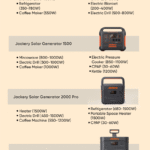Disclosure: This post contains affiliate links and I will be compensated if you make a purchase after clicking through my links. Learn More
To protect a generator from an EMP, use a Faraday cage or EMP shield. These methods block harmful electromagnetic pulses.
Electromagnetic pulses (EMP) can severely damage electronic devices, including generators. An EMP can originate from solar flares, nuclear explosions, or other sources, rendering essential equipment useless. Shielding your generator is crucial for maintaining power in emergencies. Faraday cages and EMP shields offer effective protection by blocking electromagnetic waves.
These protective measures are relatively easy to implement and can save you from costly damages. Investing in EMP protection ensures your generator remains functional during critical times, providing peace of mind and continuous power supply. Prioritize these steps to secure your generator and maintain operational readiness.
Introduction To Emp Threats
Electromagnetic pulses (EMP) are powerful bursts of electromagnetic energy. These pulses can disrupt or destroy electronic devices. An EMP can come from natural or man-made sources. Protecting your generator from an EMP is crucial. Let’s dive into the details.
What Is An Emp?
An EMP is a short burst of electromagnetic energy. It can result from a solar flare or a nuclear explosion. EMPs can damage or disrupt electronic circuits. They can travel through the air and affect a wide area.
An EMP has three phases: E1, E2, and E3. The E1 phase is very fast and can damage computers and communication systems. The E2 phase is like lightning and is less harmful. The E3 phase is slow but can damage power grids and long wires.
Potential Dangers To Generators
Generators can be vulnerable to EMPs. The E1 phase can fry the generator’s electronic components. The E3 phase can cause voltage surges, damaging the generator’s wiring.
Here are some potential dangers:
- Electronic Control Damage: EMPs can disrupt the generator’s control systems.
- Power Surges: Voltage spikes can overload the generator’s circuits.
- Complete Shutdown: Severe EMPs can cause the generator to stop working.
Taking precautions can help protect your generator. Shielding and grounding are effective methods. Using surge protectors can also be helpful.
| Phase | Effect | Impact on Generators |
|---|---|---|
| E1 | Fast Pulse | Damage to electronics |
| E2 | Lightning-like | Minimal impact |
| E3 | Slow Pulse | Power surges |
Understanding EMP threats is the first step. Protecting your generator ensures its longevity and functionality.
Assessing Vulnerability
Protecting your generator from an EMP is crucial. Understanding your generator’s vulnerabilities is the first step. This section will guide you through assessing these vulnerabilities effectively.
Identifying Weak Points
Identifying weak points in your generator is essential. EMP attacks can exploit these weaknesses easily. Look for areas where EMP could enter the system. This includes wires, control panels, and other openings.
Make a list of all the external connections. This includes fuel lines, power cords, and ventilation points. These are potential entry points for EMP. Ensure that all access points are well-shielded.
Evaluating Generator Type
Different generators have different levels of vulnerability. Identifying your generator type helps in assessing the risk.
Portable generators are more vulnerable. They are often exposed and have fewer protective measures. Standby generators have moderate vulnerability. They are usually installed with some protective measures. Inverter generators are the least vulnerable. They have built-in protection against voltage spikes.
After evaluating your generator type, take necessary steps. Shielding and grounding are good starting points. Use Faraday cages for portable generators. For standby generators, enhance the existing protective measures. Ensure inverter generators are well-maintained.
Shielding Techniques
Protecting a generator from an EMP (Electromagnetic Pulse) involves using effective shielding techniques. These methods help mitigate the impact of EMPs, ensuring your generator remains functional. This section explores two primary shielding methods: Faraday Cages and Shielded Enclosures.
Faraday Cages
A Faraday Cage is a metallic enclosure that blocks electromagnetic fields. It is one of the most effective ways to protect electronic devices from EMPs.
- Construct the cage using conductive materials like copper or aluminum.
- Ensure the cage has no gaps or openings.
- Ground the cage for additional protection.
Place your generator inside the Faraday Cage. This will shield it from EMPs. The cage should cover the generator completely.
Shielded Enclosures
Shielded Enclosures are another effective method. These are specially designed to block electromagnetic interference.
- Use materials like stainless steel or specialized EMP shielding fabric.
- Ensure all seams and joints are sealed properly.
- Include a grounded connection to divert any EMP energy.
These enclosures are often easier to install and can be custom-made. Shielded Enclosures can be a practical solution for long-term protection.
Both Faraday Cages and Shielded Enclosures provide robust protection. Choose the method that best suits your needs and resources.

Credit: mosequipment.com
Surge Protection
Surge protection is vital for safeguarding your generator from an EMP (Electromagnetic Pulse). EMPs can cause sudden spikes in electrical voltage. These spikes can damage your generator. Using proper surge protection methods can help prevent this damage.
Installing Surge Protectors
Surge protectors shield your generator from voltage spikes. They are easy to install and provide a barrier against electrical surges. Follow these steps to install surge protectors:
- Choose a surge protector rated for your generator’s voltage.
- Switch off your generator before installation.
- Plug the surge protector into the generator’s outlet.
- Connect the generator to the necessary devices.
- Switch the generator back on.
Ensure the surge protector has a light indicator. This will show if it is working correctly. Regularly check and replace worn-out surge protectors.
Using Emp Rated Filters
EMP rated filters offer additional protection. They block harmful EMP signals. These filters are specially designed to handle high-energy pulses. Here are the steps to use EMP rated filters:
- Buy an EMP rated filter that matches your generator’s specs.
- Turn off your generator before installation.
- Attach the filter to the generator’s input line.
- Ensure all connections are tight and secure.
- Switch the generator back on and test the filter.
EMP rated filters act as a second line of defense. They work alongside surge protectors to keep your generator safe. Regular maintenance and checks ensure long-term protection.
Grounding Methods
Protecting a generator from an EMP (Electromagnetic Pulse) involves several steps. Among these, proper grounding methods are crucial. Grounding helps direct the EMP’s energy safely into the earth, reducing damage.
Proper Grounding Practices
Effective grounding starts with understanding basic principles. Grounding a generator correctly can protect it from EMP damage. It’s important to ensure all connections are secure and well-maintained.
- Use thick copper wires for grounding.
- Connect the generator’s frame to a ground rod.
- Ensure all connections are tight and free of corrosion.
Regularly inspect the grounding setup. Look for any signs of wear or damage. Maintaining a clean and secure connection is key.
Using Ground Rods
Ground rods are essential for a reliable grounding system. They provide a direct path for the EMP energy to dissipate into the earth.
| Material | Length | Diameter |
|---|---|---|
| Copper | 8 feet | 5/8 inch |
| Galvanized Steel | 8 feet | 5/8 inch |
- Choose a rod made of copper or galvanized steel.
- Drive the rod at least 8 feet into the ground.
- Connect the rod to the generator using a thick copper wire.
Ensure the ground rod is placed in moist soil for better conductivity. This helps in effectively dissipating the EMP’s energy.
Backup Systems
Protecting your generator from an EMP is crucial. Backup systems can help ensure continuous power. These systems are your first line of defense during an EMP attack.
Battery Backup Options
A battery backup can be a lifesaver. It keeps your generator running during an EMP event. Choose batteries that are EMP-resistant. Lead-acid batteries are a good choice. They are durable and reliable.
Consider using a battery bank. A battery bank is a group of connected batteries. It provides more power and lasts longer. You can also use solar chargers. Solar chargers keep your batteries charged without external power.
| Battery Type | Pros | Cons |
|---|---|---|
| Lead-Acid | Durable, Reliable | Heavy, Maintenance Required |
| Lithium-Ion | Lightweight, High Capacity | Expensive, Sensitive to Heat |
Manual Start Mechanisms
Manual start mechanisms are essential. They allow you to start your generator without electronics. Use a pull-start mechanism. It’s simple and effective.
Spring-loaded starters are another option. They use a spring to start the engine. This method is reliable and easy to use. Make sure your manual start system is well-maintained.
Here is a list of common manual start mechanisms:
- Pull-Start Mechanism
- Spring-Loaded Starter
- Crank Start
Keep spare parts for your manual start system. This ensures your generator will start during an EMP event.
Maintenance And Inspections
Regular maintenance and inspections are crucial to protect a generator from an EMP. These steps help ensure the generator is always ready and in good condition. Follow these simple guidelines to keep your generator running smoothly and to prevent damage from electromagnetic pulses.
Regular Testing
Regular testing is important to confirm your generator works properly. Test your generator at least once a month. This helps identify issues early.
- Start the generator and let it run for 10-15 minutes.
- Check for any unusual noises or vibrations.
- Ensure all switches and controls function correctly.
- Monitor the voltage and frequency output.
Testing helps ensure the generator can handle an emergency. Document each test in a logbook.
Routine Inspections
Routine inspections help spot potential problems before they become serious. Inspect your generator every three months.
- Check the fuel system for leaks or clogs.
- Inspect the air filter and clean or replace it if dirty.
- Examine the oil level and change the oil if necessary.
- Look for any loose or corroded connections.
- Check the battery and charging system.
Use a checklist to ensure all parts are inspected. This helps keep your generator in top shape.
| Inspection Item | Frequency |
|---|---|
| Fuel System | Every 3 months |
| Air Filter | Every 3 months |
| Oil Level | Every 3 months |
| Connections | Every 3 months |
| Battery | Every 3 months |
Regular maintenance and inspections ensure your generator is always ready. This can help protect it from an EMP.
Emergency Preparedness
Preparing for an EMP event is crucial. An EMP can disable your generator. Ensuring your generator works post-EMP is essential. This guide helps you plan and train. Protect your generator and stay prepared.
Creating An Emp Response Plan
A solid EMP response plan is the first step. Outline all steps needed to protect your generator. Here are key elements:
- Identify vulnerable equipment.
- Purchase EMP protection devices.
- Store replacement parts safely.
- Develop a communication plan.
Training And Drills
Training ensures everyone knows what to do. Schedule regular drills. Practice your EMP response plan often. Here’s a checklist:
- Review the EMP response plan.
- Conduct practice drills.
- Update procedures as needed.
- Test communication systems.

Frequently Asked Questions
How To Shield A Generator From Emp?
Shield your generator using a Faraday cage. It blocks electromagnetic waves, protecting sensitive equipment from EMP damage.
What Materials Protect Against Emp?
Use conductive materials like aluminum or copper for shielding. These materials effectively block EMP waves and protect electronics.
Can A Faraday Cage Protect My Generator?
Yes, a Faraday cage can protect your generator from EMP. It creates a conductive enclosure, blocking electromagnetic pulses.
Do I Need To Ground A Faraday Cage?
Grounding a Faraday cage improves its effectiveness. It helps dissipate the electromagnetic energy safely into the ground.
Final Thoughts
Safeguarding your generator from an EMP is essential for continuous power. Use Faraday cages, surge protectors, and proper grounding. Regular maintenance ensures long-term protection. These steps help shield your generator from potential EMP damage. Prioritize these measures to keep your power supply secure and reliable.








